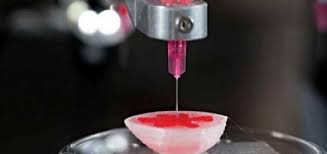
Breaking News
 Large global study analyzing data from 192 countries has sparked intense debate by suggesting...
Large global study analyzing data from 192 countries has sparked intense debate by suggesting...
 Agentic AI is the Next Phase Where AI Affects Our Lives - Live Stream
Agentic AI is the Next Phase Where AI Affects Our Lives - Live Stream
 Iran conducts surprise missile drills amid rising tensions with Israel
Iran conducts surprise missile drills amid rising tensions with Israel
Top Tech News
 EngineAI T800: Born to Disrupt! #EngineAI #robotics #newtechnology #newproduct
EngineAI T800: Born to Disrupt! #EngineAI #robotics #newtechnology #newproduct
 This Silicon Anode Breakthrough Could Mark A Turning Point For EV Batteries [Update]
This Silicon Anode Breakthrough Could Mark A Turning Point For EV Batteries [Update]
 Travel gadget promises to dry and iron your clothes – totally hands-free
Travel gadget promises to dry and iron your clothes – totally hands-free
 Perfect Aircrete, Kitchen Ingredients.
Perfect Aircrete, Kitchen Ingredients.
 Futuristic pixel-raising display lets you feel what's onscreen
Futuristic pixel-raising display lets you feel what's onscreen
 Cutting-Edge Facility Generates Pure Water and Hydrogen Fuel from Seawater for Mere Pennies
Cutting-Edge Facility Generates Pure Water and Hydrogen Fuel from Seawater for Mere Pennies
 This tiny dev board is packed with features for ambitious makers
This tiny dev board is packed with features for ambitious makers
 Scientists Discover Gel to Regrow Tooth Enamel
Scientists Discover Gel to Regrow Tooth Enamel
 Vitamin C and Dandelion Root Killing Cancer Cells -- as Former CDC Director Calls for COVID-19...
Vitamin C and Dandelion Root Killing Cancer Cells -- as Former CDC Director Calls for COVID-19...
 Galactic Brain: US firm plans space-based data centers, power grid to challenge China
Galactic Brain: US firm plans space-based data centers, power grid to challenge China
Scientists successfully 3D print human cartilage with a breakthrough stem cell printer

(Natural News) Recently, Swedish scientists successfully developed cartilage tissue by printing stem cells through a 3D bioprinter. As part of the study, a team of researchers at the Sahlgrenska Academy and the Chalmers University of Technology in Sweden harvested cartilage cells from knee surgery patients. The experts then coaxed the cells into becoming pluripotent stem cells. These stem cells were touted for their potential in developing into different types of cells. The researcher expanded and encapsulated the stem cells in a nanofibrillated cellulose. The research team then used a 3D bioprinter to print the stem cells into a structure.
The team took three years to identify the right method in surviving the stem cells during printing. According to the experts, using large amounts of live stem cells can make the process possible. "In nature, the differentiation of stem cells into cartilage is a simple process, but it's much more complicated to accomplish in a test tube. We're the first to succeed with it, and we did so without any animal testing whatsoever. We investigated various methods and combined different growth factors. Each individual stem cell is encased in nanocellulose, which allows it to survive the process of being printed into a 3D structure. We also harvested mediums from other cells that contain the signals that stem cells use to communicate with each other so called conditioned medium. In layman's terms, our theory is that we managed to trick the cells into thinking that they aren't alone. Therefore the cells multiplied before we differentiated them," said lead researcher Professor Stina Simonsson in ScienceDaily.com.
Potential use of bioprinted cartilage
Surgeons who examined the artificial cartilage confirmed that the bioprinted tissue contained properties that were similar to real human cartilage. According to the surgeons, the bioprinted cartilage contained Type-II collagen and perfectly-formed cells. The cellular structure of the bioprinted tissue also appeared to be similar to human cartilage samples, the surgeons noted.

 This is why RAM costs so much
This is why RAM costs so much

